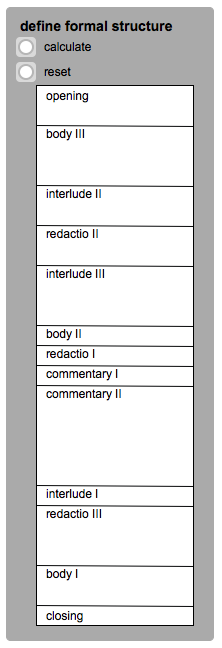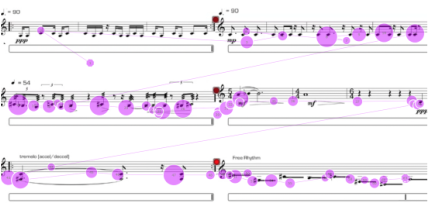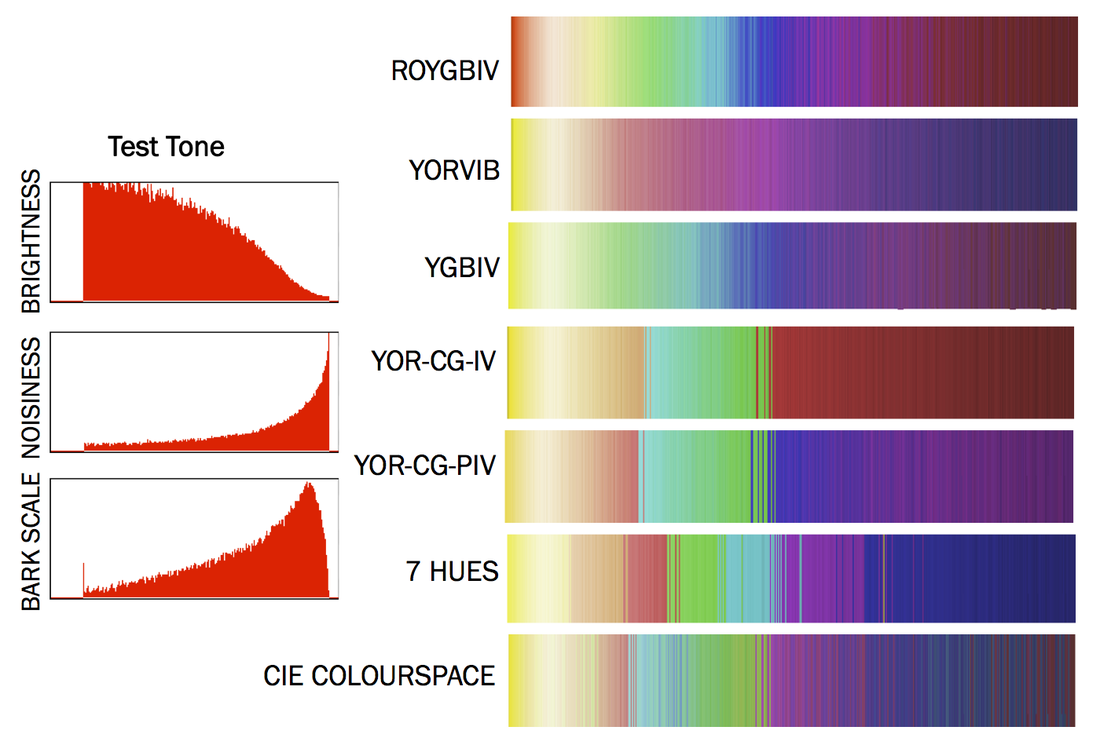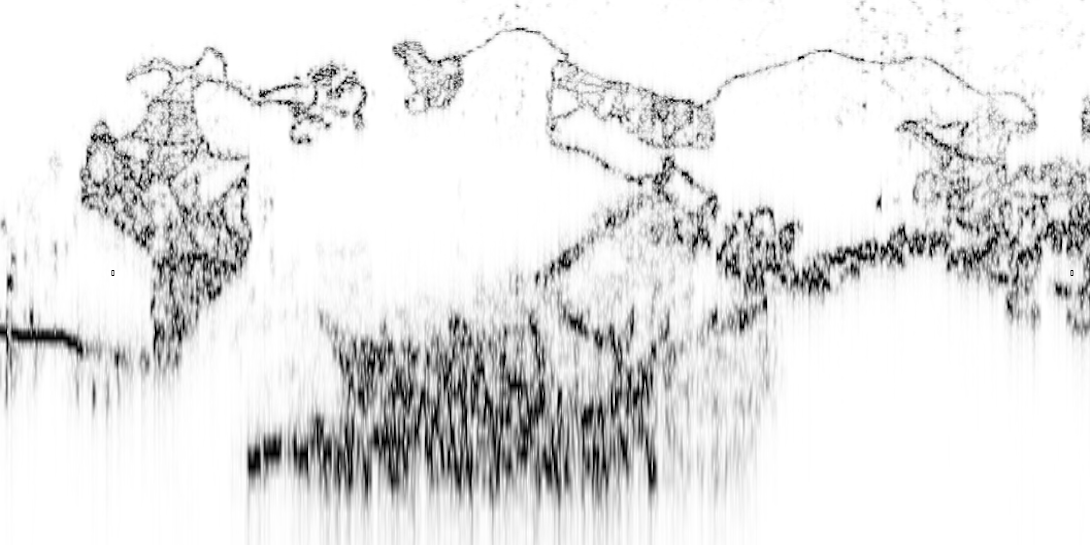| Semantics of Redaction includes a panel allowing the performer to define the work's formal structure independently for each performance. Clicking on the "calculate" button "randomly" sets the proportional duration and ordering (except for the opening and closing) of sections. As the behaviour and "orchestration" of each section is different, this allows the possibility of exploring different formal structures even if the performance is based on the same source recording.To the left are several versions. |
|
0 Comments
One issue of interest to me in the case of silent revolution, was whether the images would be fixated upon in addition to the notation. This particular reading seems to indicate that they are not directly looked at by the performer. It is an issue that might be more fully revealed by reading the whole score and additionally may be idiosyncratic for each reader.
The eye contains only three kinds of colour detecting cone cells: red, green and blue. Colours that fall between them appear perceptually brighter. The “height/lightness” of spectral colours is also inverted in comparison to the pitch spectrum: higher frequency colours are perceived as darker and heavier. The picture below shows the response curves of RGB cones mapped to the colour spectrum and illustrates how the "lighter" anomalies occur at the mid-points between them. Lyrebird at present allows for the following mappings of timbral brightness to hue. The spectra below depict a test tone of increasing brightness, noisiness and bark scale depicted by a variety of mappings.
 Ablinger: Phonorealism Spectral analysis data from recordings is “reconstituted in various media: instrumental ensembles, white noise, or computer-controlled player piano. The Speaking Piano "The reproduction of "phonographs" by instruments can be compared to photo-realist painting, or - what describes the technical aspect of the "Quadraturen" more precisely -with techniques in the graphic arts that use grids to transform photos into prints Using a smaller grain, e.g. 16 units per second, the original source approaches the border of recognition within the reproduction." Ablinger, P., (2011). Quadraturen 1995-2000. The thing that is interesting about sonification/visualisation/re-sonfication/re-visualisation (etc) is not only the distortion it creates, but also how, like the sponge that can be passed through a sieve but will reconstitute itself, the transfer from one modality to another (and back) retains elements of form. In Nature Forms I, the visual representation of natural shapes is passed through the distorting mirrors of three performers and a computer. Four contrasting forms of reading/sonifcation are presented for the audience: machine sonification in which spatial position and colour are more or less precisely rendered; tablature in which spatial position and colour are recast against the geography of a specific instrument; semantic reading in which the performer’s understanding of notational conventions informs the outcome; and aesthetic reading in which the performer’s understanding of the conventions of sonic representation of broader conceptual issues are drawn upon.
following conversations with michael terren, josten myburgh and dane yates - some ideas for representing drum kit and no-imput mixer tablature notation spatially (so the notation is where the instruments are) and proportionally (so that horizontal space=time) - for scrolling scores. spatial/proportional drum kit notation spatial/proportional no-input mixer notation
|
lindsay vickerytest version CategoriesArchives
September 2020
|


















 RSS Feed
RSS Feed
